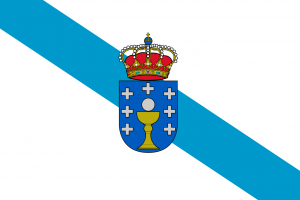Language/Galician/Grammar/Adjective-Agreement
| ◀️ Descriptive Adjectives — Previous Lesson | Next Lesson — Common Clothing Items ▶️ |
Welcome to this exciting lesson on Adjective Agreement in Galician! As we continue our journey through the Galician language, understanding how adjectives work in relation to nouns is essential. Adjectives are words that describe nouns, and in Galician, they must agree with the nouns they modify in both gender and number. This means that if a noun is feminine or masculine, singular or plural, the adjective must reflect that.
In Galician, we have two genders: masculine and feminine. Additionally, nouns can be singular or plural, which means adjectives must adapt accordingly. This lesson will provide you with a comprehensive overview of how this agreement works, along with numerous examples and exercises to help solidify your understanding.
In this lesson, we will cover the following topics:
Understanding Gender[edit | edit source]
To start, let's delve into the concept of gender in Galician. Nouns in Galician are categorized as either masculine or feminine. This classification often determines how adjectives are formed.
Masculine and Feminine Nouns[edit | edit source]
- Masculine nouns often end in -o (e.g., "gato" - cat).
- Feminine nouns usually end in -a (e.g., "gata" - female cat).
Adjective Forms[edit | edit source]
Adjectives in Galician change their endings based on the gender of the nouns they modify.
Masculine Adjectives[edit | edit source]
- Masculine adjectives typically end in -o.
- For example:
- "gato negro" (black cat)
- "coche rápido" (fast car)
Feminine Adjectives[edit | edit source]
- Feminine adjectives often end in -a.
- For example:
- "gata negra" (black female cat)
- "coche rápida" (fast female car)
Number Agreement[edit | edit source]
In addition to gender, adjectives must also agree in number with the nouns they describe.
Singular and Plural[edit | edit source]
- Singular forms for masculine adjectives end in -o, while plural forms end in -os.
- Singular forms for feminine adjectives end in -a, while plural forms end in -as.
Examples:
| Galician | Pronunciation | English |
|---|---|---|
| gato negro | ˈɡato ˈneɣɾo | black cat |
| gatos negros | ˈɡatos ˈneɣɾos | black cats |
| gata negra | ˈɡata ˈneɣɾa | black female cat |
| gatas negras | ˈɡatas ˈneɣɾas | black female cats |
Adjective Placement[edit | edit source]
In Galician, adjectives usually come after the nouns they modify, although some adjectives can precede the noun for emphasis or style.
Examples:
- "casa grande" (big house)
- "grande casa" (big house with emphasis)
Practice with Adjective Agreement[edit | edit source]
Now that we have a solid understanding of how adjectives agree with nouns, let’s put it into practice with some exercises.
Exercises[edit | edit source]
1. Fill in the blanks with the correct form of the adjective:
- "o coche ___" (fast)
- "a casa ___" (big)
- "os gatos ___" (black)
- "as gatas ___" (happy)
2. Translate the following sentences into Galician:
- The black car is fast.
- The happy cats are playful.
- The big house is beautiful.
3. Match the nouns with the correct adjectives:
- (a casa, a gata, o gato, os coches)
- (grande, negro, feliz, rápidos)
4. Correct the following sentences if needed:
- "O gata é bonita."
- "As coches son rápido."
- "Os gatas son feliz."
5. Complete the sentences with the right adjective form:
- "Os libros ___" (interesting)
- "A película ___" (boring)
- "Os amigos ___" (funny)
6. Create your own sentences using the following nouns and adjectives:
- (gato, negro)
- (gata, branca)
- (coches, rápidos)
7. Choose the correct form of the adjective:
- "A casa (grande/grandes) é bonita."
- "Os gatos (feliz/felices) son amigos."
- "O coche (rápido/rápidos) é novo."
8. Identify the errors in the sentences and correct them:
- "As casas grandes."
- "O gato negre."
- "As gatas feliz."
9. Write a short paragraph describing your family using at least 5 adjectives.
10. Translate the sentences into Galician and ensure correct adjective agreement:
- The black dog is friendly.
- The happy children are playing.
- The beautiful flowers bloom in spring.
Solutions and Explanations[edit | edit source]
1.
- "o coche rápido"
- "a casa grande"
- "os gatos negros"
- "as gatas felices"
2.
- "O coche negro é rápido."
- "Os gatos felices son xoguetóns."
- "A casa grande é bonita."
3.
- a casa - grande
- a gata - feliz
- o gato - negro
- os coches - rápidos
4.
- "O gata é bonita." → "A gata é bonita."
- "As coches son rápido." → "Os coches son rápidos."
- "Os gatas son feliz." → "As gatas son felices."
5.
- "Os libros interesantes."
- "A película aburrida."
- "Os amigos divertidos."
6. Student answers will vary.
7.
- "A casa grande é bonita."
- "Os gatos felices son amigos."
- "O coche rápido é novo."
8.
- "As casas grandes." (correct)
- "O gato negro." (correct)
- "As gatas felices." (correct)
9. Student answers will vary.
10.
- "O perro negro é amigable."
- "Os nenos felices están a xogar."
- "As flores fermosas florecen na primavera."
By completing these exercises, you will reinforce the critical skill of adjective agreement in Galician.
As we conclude this lesson, remember that practice makes perfect. Try to incorporate these concepts into your everyday conversations in Galician. The more you use the language, the more natural it will feel!
Sources[edit | edit source]
Other Lessons[edit | edit source]
- Questions
- Adjectives
- Common Prepositions
- Prepositions
- Be Polite
- Gender
- Indefinite Articles in Galician
- 0 to A1 Course
- Future Tense
| ◀️ Descriptive Adjectives — Previous Lesson | Next Lesson — Common Clothing Items ▶️ |

